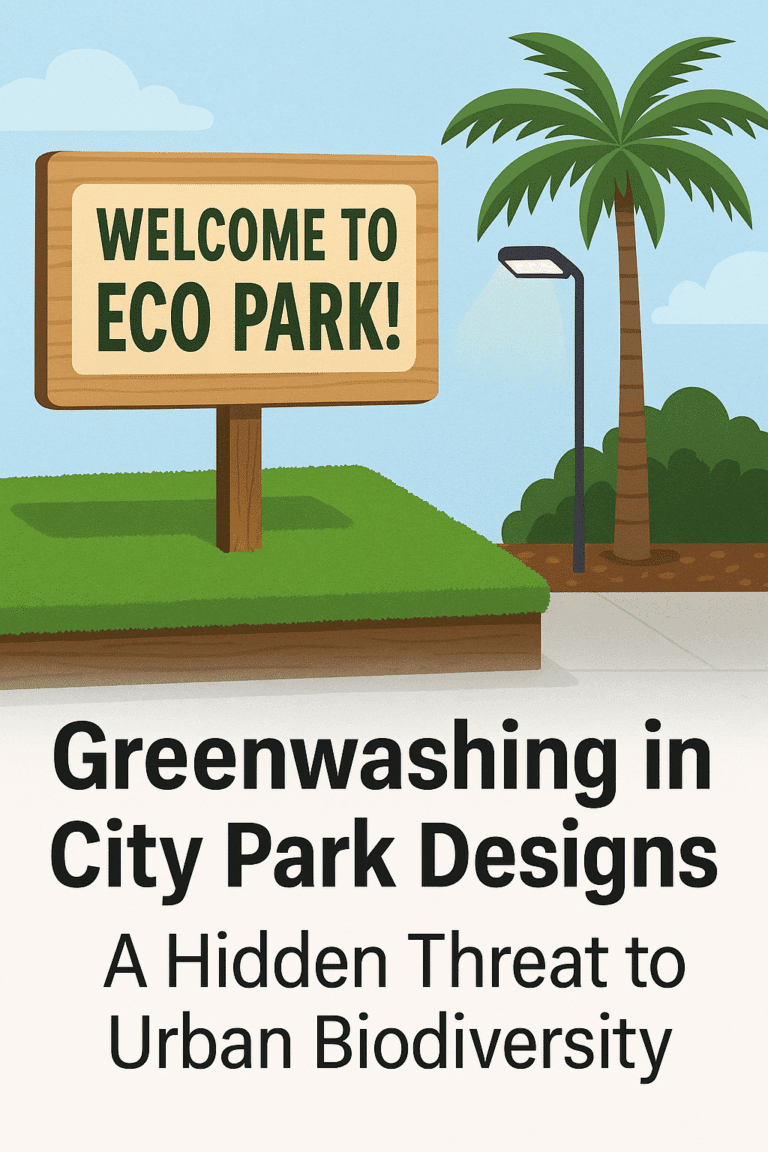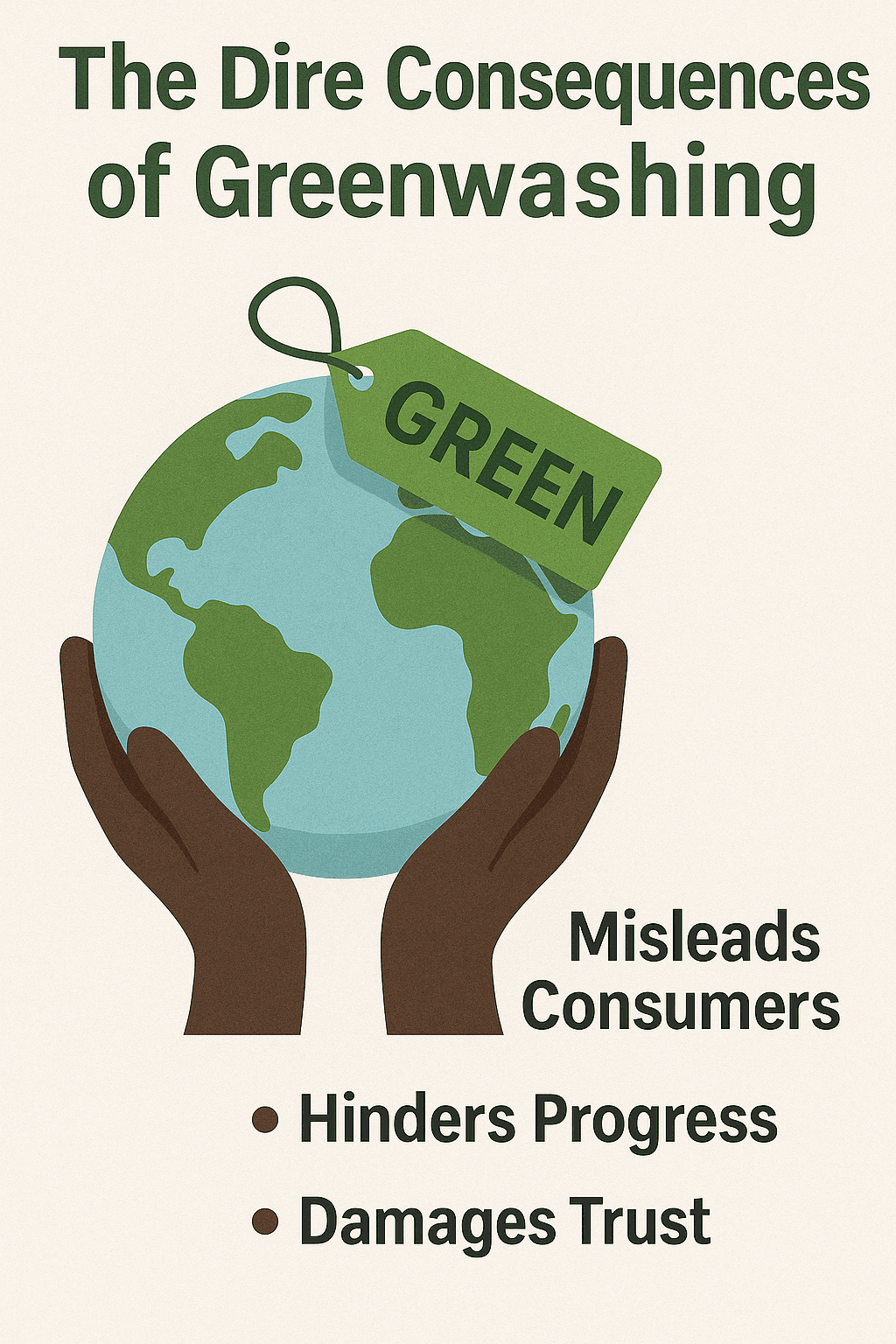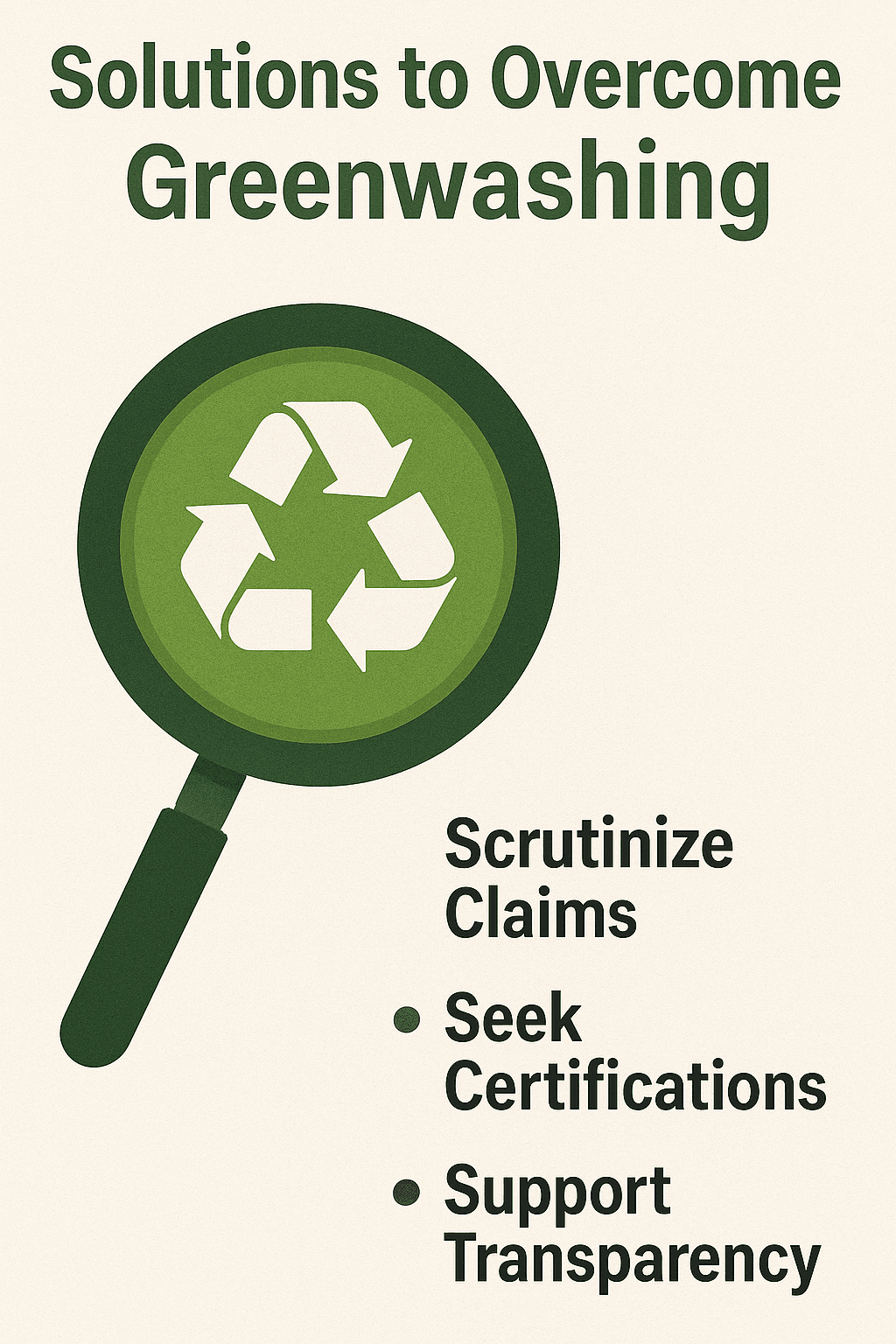
Table of Contents
ToggleGreenwashing in city park designs: Hidden truth
Let’s understand Greenwashing before discovering why some urban parks reduce biodiversity. Greenwashing is when something is marketed as environmentally friendly but offers little or no ecological benefit. It looks green, but it’s not actually green. In the context of City Parks, greenwashing happens when Parks are designed to appear sustainable, full of greenery and walking trails. However, they ignore what the ecosystem needs to survive.
These parks may be full manicured lawns, exotic plants and concrete edges. Still, they lack the essential ingredients of real biodiversity which are native plants, layered habitats, deadwood, pollinator zones and more. According to the U.S. Environmental Protection Agency, without a biodiversity-sensitive design, green infrastructure like a park may fail to deliver ecological benefits for wildlife and native species.
You may be thinking that urban parks look like symbols of sustainability including Lush lawns, decorative trees, wide paved paths and sleek benches. But beneath this polished surface a growing environmental issue lies that many city dwellers and even planners ignore, “greenwashing in city park designs” But why do some urban parks reduce biodiversity. We will cover why some urban parks reduce biodiversity throughout the article.

Why some urban parks reduce biodiversity
City Parks are meant to be green oases where nature can breathe within dense concrete jungles. But surprisingly, some urban parks actually reduce Biodiversity rather than protect it. Yet it’s not always because of pollution or overuse, it’s often due to how they’re designed from the ground up. Know the best native plants
Tidiness and aesthetic
One major reason is the obsession with tidiness and aesthetics. Parks are made for people first, so designers prioritize wide lawns, symmetrical rows of ornamental trees, and open sightlines. But unfortunately, these choices create a sterile environment that offers little food, shelter, or nesting opportunities for native wildlife.
Non native plant species
Another culprit is the use of native plant species. They may look vibrant but many imported trees and flowers provide zero ecological value for local birds, insects or pollinators. A butterfly might land on them but they won’t find the right nectar. A bird may perch on a limb but won’t find an insect to feed herself. Over time this breaks down the delicate food web that supports Biodiversity.
According to a U.S. Forest Service report, urban tree canopies that are unevenly distributed or dominated by non-native species can significantly reduce habitat quality and wildlife support in city parks.
overly manicured lawns
Many parks also use overly manicured lawns which are mowed frequently and treated with pesticides they are kept free of natural mess like logs, brush or tall grass. Moreover, this so-called mess is what many creatures need to survive, like deadwood supports fungi and beetles. Tall grasses shelter small mammals and pollinators, Fallen leaves protect soil biodiversity. Removing these misses makes the park look nice but diminishes its ecological life.
lighting and noise pollution
Lighting and noise pollution in some parks disturb nocturnal animals like bats, owls, and insects. What seems like a pleasant well-lit night walk to us can be a biological nightmare for sensitive species. Ultimately, the biggest problem is that the Parks are being built to look green – not to function ecologically.

Urban park designs that harm biodiversity
Even with good intentions, many urban Park designs end up doing more harm rather than giving benefits. And that’s why some urban parks reduce biodiversity. The problem isn’t just what’s missing but what’s repeatedly done wrong, and all this occurs in the shade of beautification and maintenance. Design is also a big reason why green infrastructure fails. Here are some mistakes written below according to my POV-
Mistake 1: prioritizing lawns over layers
Endless green lawns might look clean to visitors, but they are ecologically desert for pollinators. Lawns support very few insects, offer no shelter and are often mowed so frequently that even soil microbes struggle to survive. Without plant layering (groundcovers, shrubs or understory trees) Biodiversity will collapse. Real ecosystems are Messy and multi-layered.
Mistake 2 : Overuse of Non-native Ornamentals
Cities often plant ornamental trees and flowers simply because they look “neat” and require less cleanup. But many of these species, like ginkgo males, palms, and Bradford pears, are ecologically useless for native birds, insects, or pollinators. Some even disrupt the Kal ecosystem by outcompeting native species or failing to support food chains.
Mistake 3 : Sterilized Tree bases
Ever seen a city tree surrounded by concrete, gravel or bare soil ? That’s a common urban mistake. When tree bases are sealed off or stripped clean then it blocks underplanting, soil insects, fungi and the natural decay cycle. These all together form critical food webs. These dead zones around living trees isolate them ecologically.
Mistake 4 : Hard Edges and Over-Designed Paths
Modern Park design supports & encourages clean lines, which have sharp curbs, wide paved paths, and boxed garden beds. But these hard transitions between natural and built space confuse wildlife movement. Small mammals, amphibians and insects need a gentle gradient not abrupt concrete walls to access resources safely.
Mistake 5: Obsessive Cleanliness
Deadwood, leaf litter, brush piles – these are removed from many parks in the name of “cleanliness.” But for nature, this material is gold. Rotting logs host fungi and beetles. Leaf litter provides shelter to ground-nesting bees. Removing it all to impress visitors turns the park into a biological ghost town.
Mistake 6: Over-illumination and Noise
Nighttime lighting makes the Park feel safer for humans, but for wildlife, especially bats, moths, owls, and frogs, this artificial light is disorienting. Combining these light issues with human noise makes the park inhospitable to nocturnal species that once thrived in cities after dark.
Common point in all these mistakes
All these problems have arisen due to human comfort and aesthetic looking rather than ecological function. City planners are designing parks like outdoor malls which are safe, neat and photogenic but in reality wildlife needs messy, layered, quiet and native. EPA guidelines state that green infrastructure without ecological planning often fails to sustain biodiversity.

Worst Trees for urban wildlife
Trees are often seen as good for urban spaces but not all trees support local Biodiversity. In fact, in many tier 1 cities like New York, London, Toronto, or Sydney, parks are unknowingly harming ecosystems by planting species that offer little to no Habitat value, and they even disrupt native food webs. Green parking lot design
1. Highly Invasive ornamentals
Many urban parks prioritize aesthetics over ecology. Tree-like gallery pear (Pyrus calleryana), tree of heaven(Ailanthus altissima), and Mimosa (Albizia julibrissin) are fast-growing and visually appealing, but they displace native flora, alter soil chemistry, and fail to support local insects and birds.
In cities like Washington and Sydney, these species have outcompeted native vegetation in unmanaged park edges and vacant green lots. Fact: Tree-of-Heaven is a known host of the destructive Spotted Lanternfly, making it a double threat in U.S. and European cities
2. NON-Native Evergreens with no food value
In dense urban areas, evergreen plants are chosen for year-round greenery and screening. However trees like – Leyland Cypress, Norway Spruce and Chinese Juniper provide minimal nectar, pollen or nesting cavities for native wildlife. These trees create “green deserts” which are visually lush but ecologically empty.
3. Clones and Sterile Hybrids
Many tier one City Parks prefer hybrid trees that are- Disease-resistant, Fast-growing, Low-maintenance. Autumn Blaze and London Plane are the two examples of this category. While great for shading benches, they don’t produce fruits, seeds or host insects which removes critical food sources for birds bees and caterpillars. A single native oak can support over 500 species of insects
4. Unseasonal Flowering Trees
Tropical imports like African tulip tree, Hong Kong orchid tree and golden trumpet may flower out of sync with the native pollinator cycle. In Los Angeles and Brisbane these imports are admired by visitors but confuse pollinators and provide nectar when it’s not ecologically needed and it all disrupts native bloom rhythms.
What to do next ?
To counter every issue choose native canopy trees like oaks, hickories, maples, or acacias based on your region. Use diverse species to create resilience and layered wildlife habitats. Work with local ecologists to develop park-specific planting guidelines which is focused on biodiversity rather than just visually appealing. Cities need to prioritize native and wildlife-supporting species.
Why some urban parks reduce Biodiversity instead of boosting it?
Urban parks often look lush and green but still reduce biodiversity when they rely on oversimplified landscaping like wide open lawns, exotic ornamental plants, or overpruned trees. These resources of a little food shelter or nesting site for native species. The key issue isn’t greenness but whether the space mimics natural habitat or not.
What landscaping choices in urban parks harm native biodiversity the most?
The most harmful landscaping choices include:
- Monoculture lawns which displace native ground cover
- Non-native ornamental plants that offer no food for local insects or birds
- Artificial lighting which disrupts nocturnal species
- Pesticide-heavy maintenance
How can city planners fix urban parks that accidentally reduce biodiversity?
City planners can reverse biodiversity loss in parks by:
- Replacing exotic plants with native understorey and shrub layers
- Allowing parts of the park to follow rewilding principles, like leaving leaf litter or dead wood
- Creating microhabitats (logs, pollinator gardens, wetlands)
- Reducing pesticide use and limiting lawn dominance
